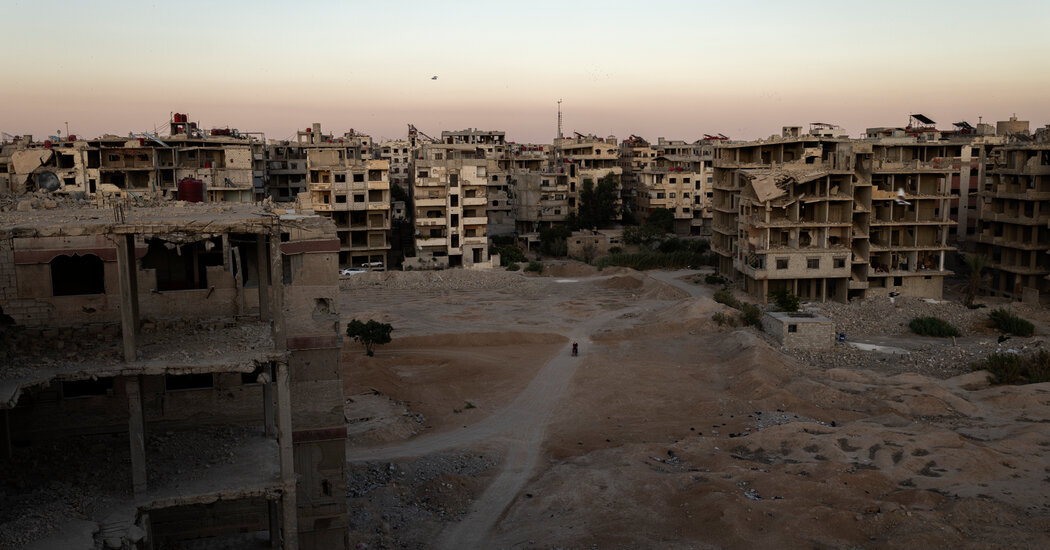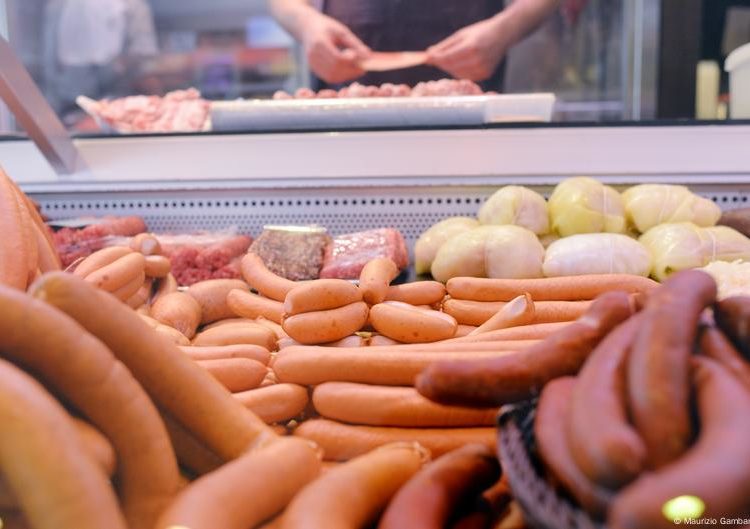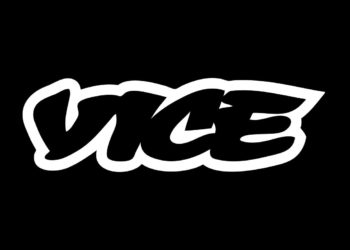The Gulf states have moved quickly to aid and invest in Syria after the sudden collapse of the country’s dictatorship, sensing a new opportunity to expand their influence in the Middle East.
The ousted president of Syria, Bashar al-Assad, was long under the sway of Iran, the Gulf’s traditional regional rival. After a coalition of rebels surprisingly unseated him in December, it was officials and businesspeople from Gulf nations who stepped up first to help Syria begin rebuilding.
When President Trump announced in May — during a state visit to Saudi Arabia — that he would suspend American sanctions on Syria, it gave both an incentive and an assurance for investors to do even more.
Syria, now led by a former rebel fighter turned president, Ahmed al-Shara, is at a “turning point,” as is the rest of the Middle East, Prince Faisal bin Farhan, the Saudi foreign minister, said in May. He was speaking after Mr. al-Shara met with Mr. Trump in the Saudi capital, Riyadh.
“We are in an incredibly difficult and dangerous time in the region — but nonetheless we are also in a time that offers incredible opportunity,” he added. “If we can now all come together to support the Syrian people and the Syrian government in actually taking charge, and building a prosperous stable secure Syria, that will impact all of the region.”
Qatar and Saudi Arabia have paid off Syria’s $15.5 million World Bank debt, making the country eligible for grants to fund reconstruction after a devastating civil war that lasted almost 14 years.
State-owned Gulf airlines have made celebratory announcements about restarting flights to the Syrian capital of Damascus.
DP World, a global port operator owned by the Gulf emirate of Dubai, made one of the earliest investments when it signed an $800 million memorandum of understanding with the Syrian government to develop the strategically located Mediterranean port of Tartus, home to a Russian naval base during the war.
Iran was one of the main backers of the Syrian dictatorship under Mr. al-Assad, providing him with military and financial assistance as he crushed an Arab Spring uprising that began in 2011 and turned into a war against his own people for more than decade.
Syria was an integral part of what was known as Tehran’s “crescent of influence,” running from Iran to the Mediterranean Sea via Iraq, Syria and Lebanon.
Several Gulf governments — chief among them Saudi Arabia — have been cultivating warmer ties with Iran over the past few years, viewing diplomacy as a more effective way to contain their neighbor than open conflict.
But they remain wary of Iran and the network of militias that it backs across the Middle East, which have staged attacks on Saudi Arabia and the United Arab Emirates.
During the brief Israel-Iran war this month, Iran shot more than a dozen missiles at an American military base in the Gulf emirate of Qatar, spreading fear and chaos through the country even though Iranian officials had sent warning of the attack beforehand.
The Gulf monarchs, who are almost all Sunni Muslim, also fear that Shiite-majority Iran could export its revolutionary ideology to the Shiite citizens among their populations, worried that this could foment unrest.
As a result, Gulf officials see the recent weakening of Iran — which has deepened since Israel’s latest offensive decapitated the Iranian military leadership — as an opening to expand their own competing model for the region. That model is focused on economic development combined with an authoritarian vision of political stability.
In Syria, as people rebuild their lives from the rubble, Gulf countries see a chance to “reshape the regional order,” said Bader Al-Saif, an assistant professor of history at Kuwait University.
“I think for once we have something that unites a lot of people in the region — that we need to focus on basic needs,” he said. “Why am I not getting 24/7 electricity, why am I not getting clean water, things like that.”
“You can say whatever you say about our countries in the Gulf, in terms of political participation,” he added. “But at least they’re serving their people, to a certain extent.”
The 12-day Israel-Iran war, which ended in a cease-fire this week, reflected how much the power dynamics in the Middle East have shifted in just a few years.
If such a conflict had occurred in years past, Syria might have served as a staging ground for Iran-backed attacks on Israel. Instead, Syria’s new government did its best to stay out of the fray.
As recently as last year, most Gulf governments — with the exception of Qatar, which had strongly backed the Syrian rebels fighting Mr. al-Assad — had moved toward a policy of normalizing relations with Mr. al-Assad.
The rapid switch now to fully engaging with the new Syria is a sign of resilience and fluidity in Gulf foreign policy, Mr. Al-Saif said.
“Syria is now uniting us within the Gulf,” he said, explaining that helping the country to rebuild is pushing Gulf governments to set aside regional competition and bickering.
One of the most surprising aspects of this moment is the fact that as unlikely a figure as Mr. al-Shara has “managed to convince everybody that he’s somebody that they can entrust with this project,” said Kristin Diwan, a senior resident scholar at the Arab Gulf States Institute in Washington, D.C.
She added that the stakes in supporting Syria’s transformation are “quite high,” as are the risks that it could become a failed state.
Saudi Arabia, which has long and porous borders, has become a prime market for smugglers carrying drugs that are often manufactured in Syria.
Mr. al-Shara, who was born in Saudi Arabia and spent his childhood there, went on to become a jihadist who was once affiliated with Al Qaeda. In the early years of the Syrian uprising, Saudi Arabia financed and armed some of the rebels. But the kingdom classified Mr. al-Shara’s faction as a terrorist group.
By the time Mr. al-Shara became the new leader of Syria late last year, he had transformed from an Islamist rebel fighter into a pragmatic politician in a suit.
“It’s not about ideology anymore,” Mr. al-Shara said in an interview in May with The Jewish Journal. “It’s about giving people a reason to stay, a reason to live — and a reason to believe.”
Saudi Arabia has gone through an equally dramatic transformation since Mr. al-Shara lived there as a child, evolving from an ultraconservative Islamic state defined by religious restrictions to a country that now hosts Instagram influencers in bikinis, American billionaire investors and raves in the desert.
Crown Prince Mohammed bin Salman of Saudi Arabia, the de facto ruler of the kingdom and also a pragmatist, is counting on Mr. al-Shara sharing a similar worldview.
And the Emirates — a Gulf country whose ruler views political Islam as an existential threat — appears to be making a similar gamble.
Khalaf Al Habtoor, an Emirati billionaire, has been particularly vocal in calling for investment in Syria.
“Syria, despite all of its wounds, is proving that it is still a land of life, work and ambition,” Mr. Al Habtoor said on social media recently. “For those who support this renaissance: Invest in Syria’s minds, in its energy, and in its noble people, who do not know defeat.”
Mr. Al-Saif, the Kuwaiti academic, said that the changes in Syria represented a rare positive narrative in a region that has been plagued by violence, political repression and poverty in recent decades.
“We still have Yemen that’s in trouble — Sudan, Libya — but for one time in many years, one story is not one of blood and war and destruction, and that’s where we want to go,” he said. “A healthy region means a healthy Gulf.”
Ismaeel Naar contributed reporting from Dubai, United Arab Emirates.
Vivian Nereim is the lead reporter for The Times covering the countries of the Arabian Peninsula. She is based in Riyadh, Saudi Arabia.
The post Gulf States Lead Push to Invest in New Syria appeared first on New York Times.



